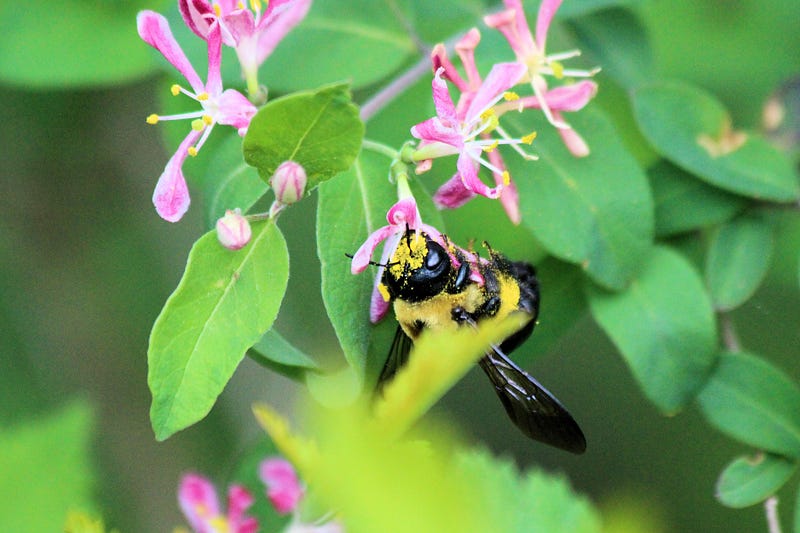
Take a look at your back yard or a nearby garden. What do you see? Bees buzzing from flower to flower, butterflies zipping around, beetles crawling over blooming plants, a hummingbird flitting by…
Most likely there are dozens of pollinators and pollinator-friendly plants in your view. This year, June 20–26 is National Pollinator Week. It’s a time to celebrate our very important friends and learn ways to help them.
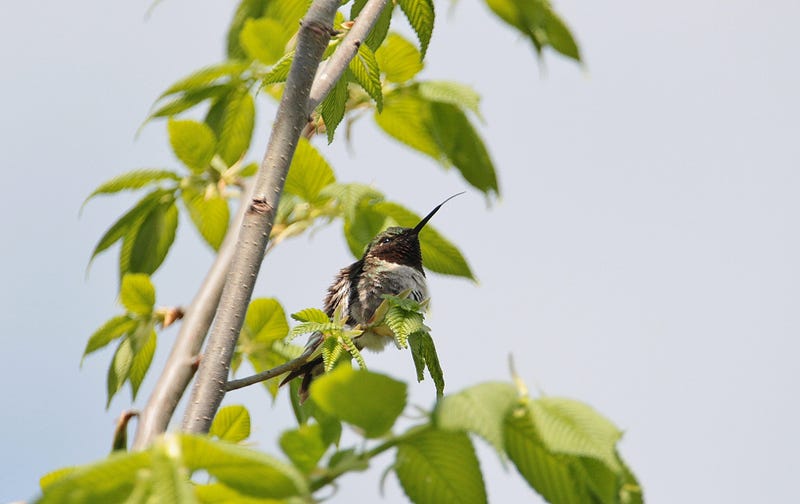
Why are pollinators important?
Pollinators have important roles in the diversity of natural ecosystems and the food we eat. Without these creatures, we would lose 80% of the food in our grocery stores. There would no longer be fruit, vegetables, coffee, sugar or… chocolate!
“Without pollinators, our dinner plates would essentially be empty. It’s shocking!” — Becca Zak, Summit Metro Parks Naturalist
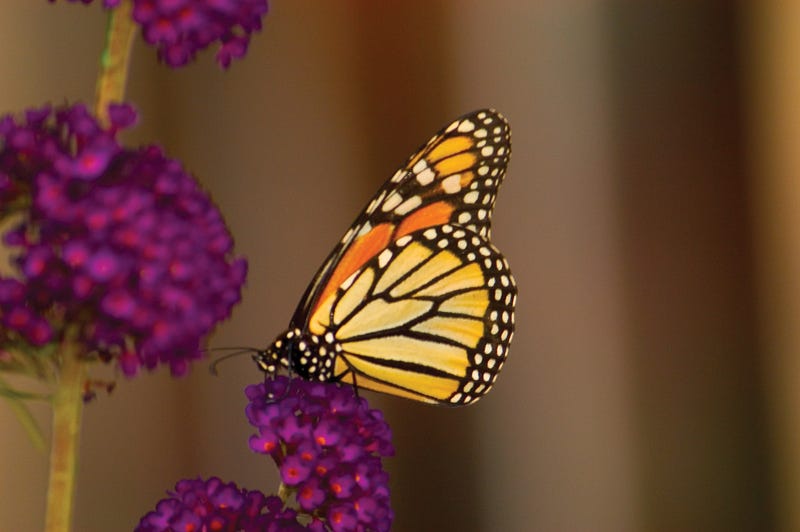
According to Pollinator Partnership, honey bees alone “pollinate approximately $10 billion worth of crops in the U.S. each year.” A statement released by the White House regarding their strategy to promote pollinator health puts the estimate at $15 billion. The statement also detailed the shocking loss of honey bees and monarch butterflies.
In 2015, beekeepers lost nearly 40% of their honey bee colonies. In the past two decades, Mexico’s forests have seen a 90% drop in overwintering monarchs. Many pollinators are struggling due to habitat loss, disease, use of pesticides and climate change.
How can we help pollinators?
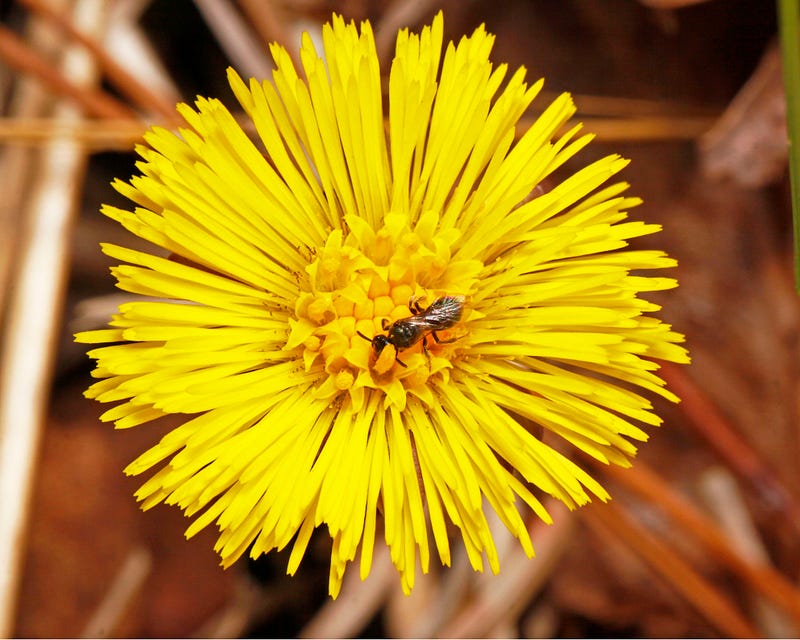
There are simple ways to make your back yard a better habitat for pollinators. Making sure they have sources of food and water, adequate shelter, and space to raise young will help bees, butterflies, beetles, and more flourish. This in turn will help your plants and flowers thrive.
You should first monitor your garden or back yard to find out which pollinators are visiting. Try to identify the types of pollinators, as well as what plants they are attracted to.
Next, survey the land outside of your property. This is important, because — for example — if you want to add a fountain to your back yard, your neighbor may already have one. Instead, you could use that space for something else that will make a positive impact on pollinators.
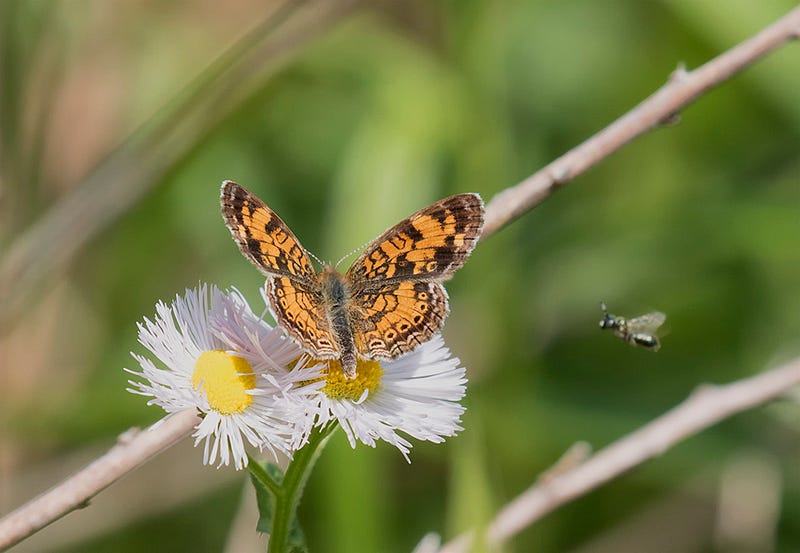
Pollinators need nectar and pollen as sources of food. They get nutrients mostly from flowers, but some can also feed on fermenting fallen fruit. Larvae will feed on host plants. What does this mean for you?
- Plant a variety of flowering plants, including host plants, to attract a variety of pollinators.
- Plant the same type of flower in a group. This allows pollinators to remember how to access the plant and easily transfer pollen.
- Consider planting wildflowers that bloom at different times throughout the year so pollinators will always have food.
- Non-native plants, including herbs and annuals, are also good for pollinators. However, make sure you don’t have any invasive plant species.
- Don’t eradicate weeds! Some are a good source of food. And using weed killer can have a detrimental effect on pollinators. Learn how to make a non-selective weed killer in a past blog post.
- If you must use pesticides for a specific issue, properly use them in a targeted area. The fewer pesticides you use, the more pollinators you’ll have.
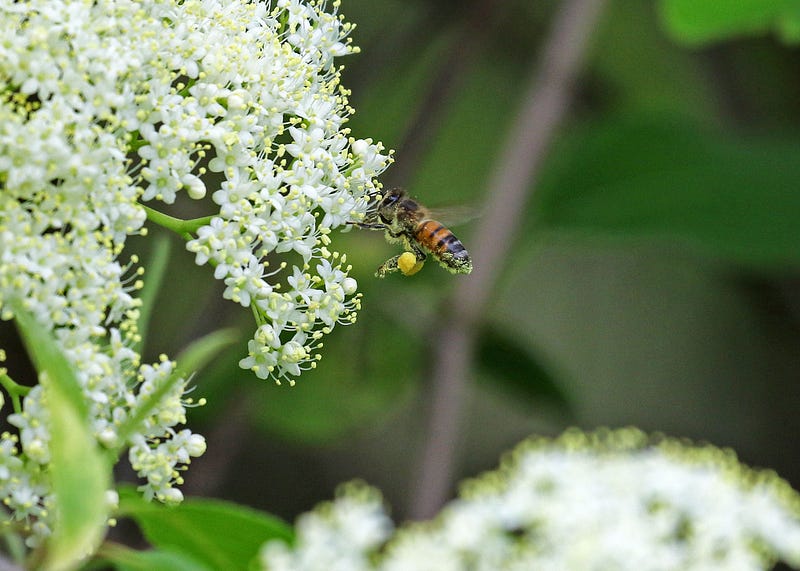
Pollinators need shelter not only to escape bad weather, but to also escape predators. Safe areas are also used for nesting and roosting. How can you help?
- Create a safe space for pollinators by grouping plants together and providing protection with multiple layers of growth from trees to ground cover.
- Don’t forget about the soil! Keep some dead wood and leaf litter for insects to create a cozy, insulated home.
- Build bee boxes or an insect condo like the one at F.A. Seiberling Nature Realm. There is information below for an easy DIY project.
- Butterflies don’t just need pretty flowers to get nectar from. They also need certain plants, such as dogwood and milkweed, to host their larvae.
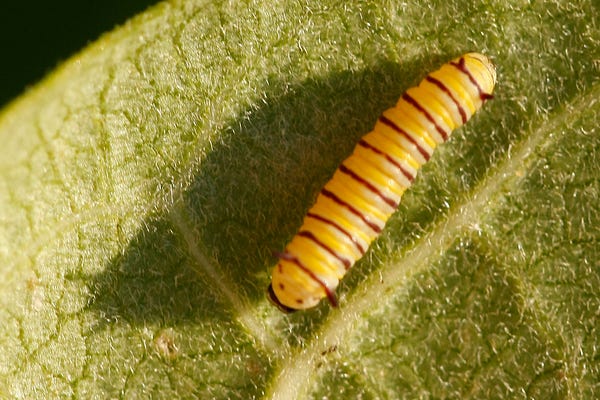
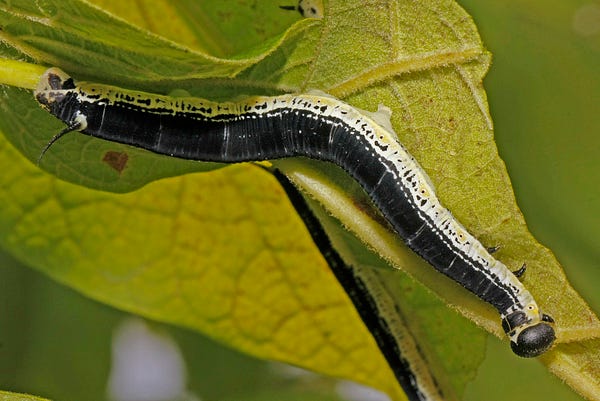
Pollinators need water to drink and bathe in. How do you keep them hydrated?
- The source of water can be natural or human-made. Running water, ponds and even small containers of water are sufficient.
- The source of water should have a shallow end or sloping side so pollinators can easily approach it without fear of drowning.
Don’t feel overwhelmed; you don’t have to make all the changes we discussed. One change can make a positive impact on pollinators.
What’s a fun DIY project that will impact pollinators?
Build an insect condo! Take an evening or a weekend to build a house — big or small — for pollinators. This will provide shelter for wasps, solitary bees, beetles and more.
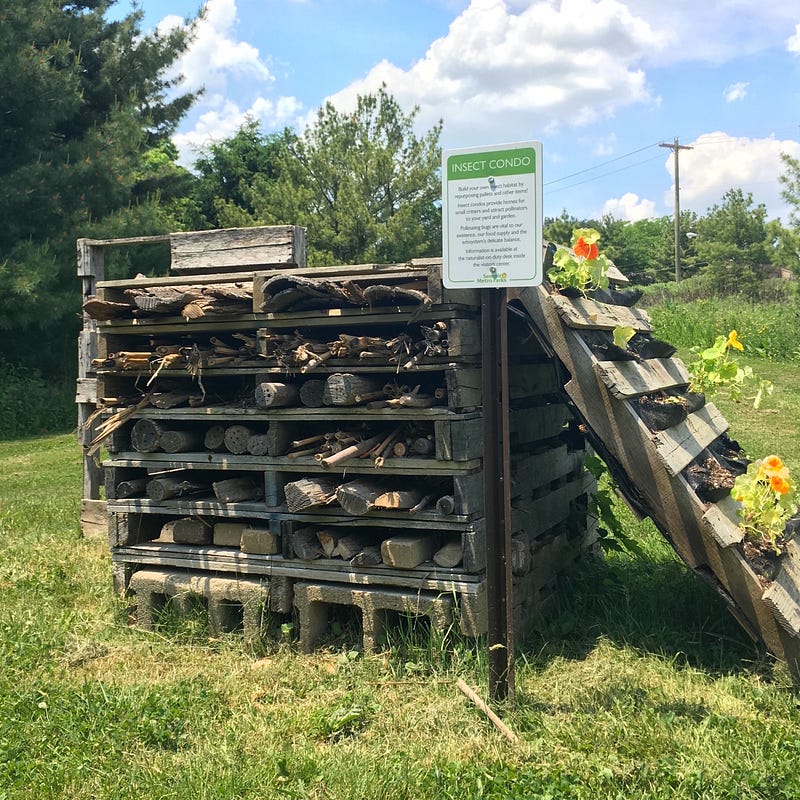
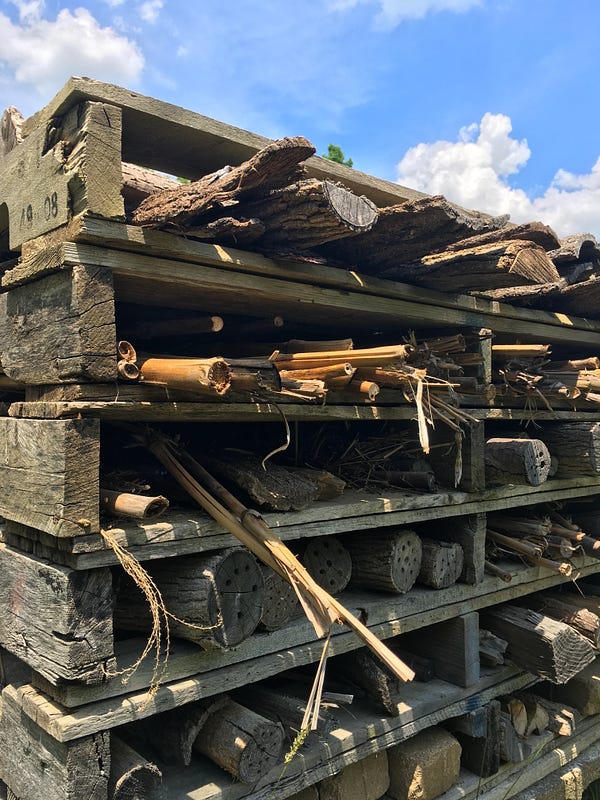
“Building an insect condo is a fun, easy and — more often than not — free activity that can be done with materials in your garage and yard.” — Becca Zak, Summit Metro Parks Naturalist
Your insect condo can be intricate or simple. You’ll need to start with some sort of structure, such as PVC pipe or a wooden box or pallet. Then you can stuff it with an assortment of materials: bark, bundles of dried stems (wingstem, ironweed, etc.), pinecones, straw, dried hollow stems (the stem of the invasive Japanese knotweed plant works great), and more.
Certain materials attract different insects, so you might want to do a little research before stuffing. Visit Inhabitat for detailed instructions for building an insect condo.
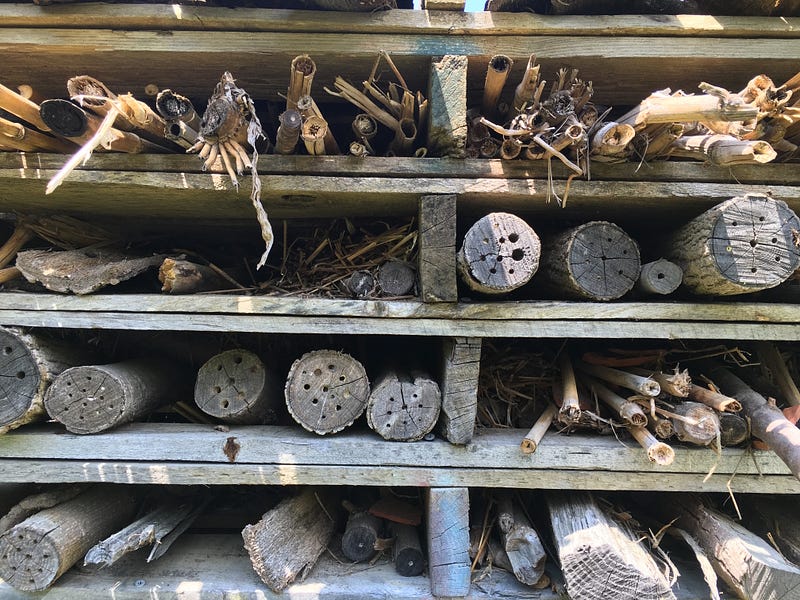
What have you discovered?
Your back yard and the Metro Parks are home to dozens of pollinator species. Bees, butterflies, moths, beetles, flies and birds need our help. If you’re supporting pollinators in your garden or see them while visiting a park, share your experience with us! Post a picture on Instagram or Twitter and tag Summit Metro Parks. You can also include the hashtags #SMPpollinators and #summitmetroparks.
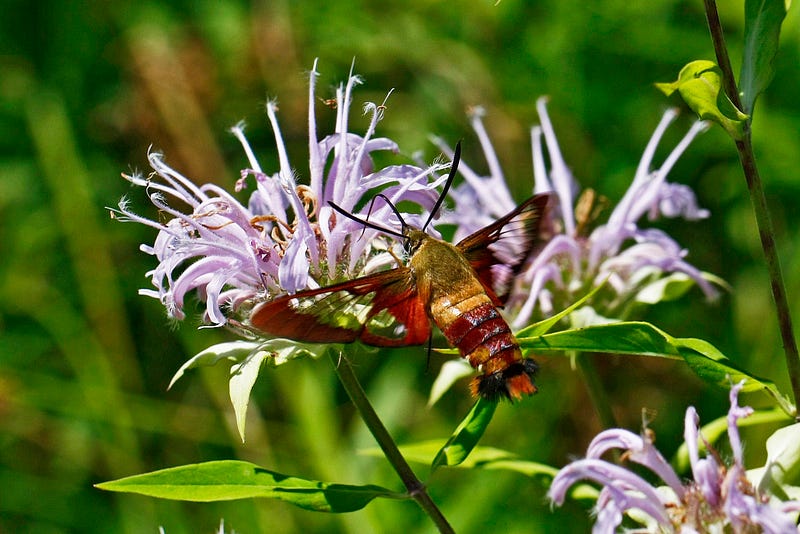
Want to learn more?
Learn about some of the insects you can find in the Metro Parks on our website.
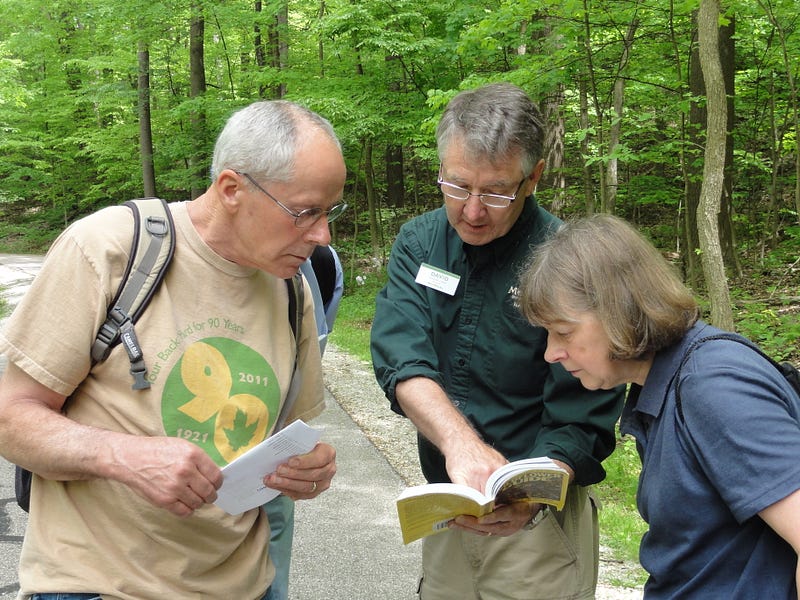
For more information on pollinators and gardening, talk to a naturalist at the Nature Realm or call 330–865–8065. Summit Metro Parks hosts related programs each month, so be sure to take a look at our monthly programs and events calendar. Here are a few you can attend in June and July:
- Moth Night: Friday, June 17, 9 p.m. — 11 p.m. at Crown Point Ecology Center
- Bugs for Kids: Friday, June 24, 1 p.m. — 2 p.m. at Silver Creek Metro Park
- Wildflower Walk: Sunday, June 26, 1 p.m. — 2 p.m. at Munroe Falls Metro Park
- Flying Jewels: Sunday, July 3, 1 p.m. — 2:30 p.m. at Furnace Run Metro Park
- Butterfly Walk: Monday, July 4, 1 p.m. — 2:30 p.m. at F.A. Seiberling Nature Realm
- Gardening through the Year: Thursday, July 14, 7 p.m. — 8:30 p.m. at F.A. Seiberling Nature Realm
- Pollinators for Kids: Monday, July 18, 10:30 a.m. — 11:30 a.m. at Crown Point Ecology Center
- Meet Me in the Garden: Wednesday, July 27, 7 p.m. — 9 p.m. at F.A. Seiberling Nature Realm
- Nature’s Magic Act: Sunday, July 31, 1 p.m. — 3 p.m. at F.A. Seiberling Nature Realm